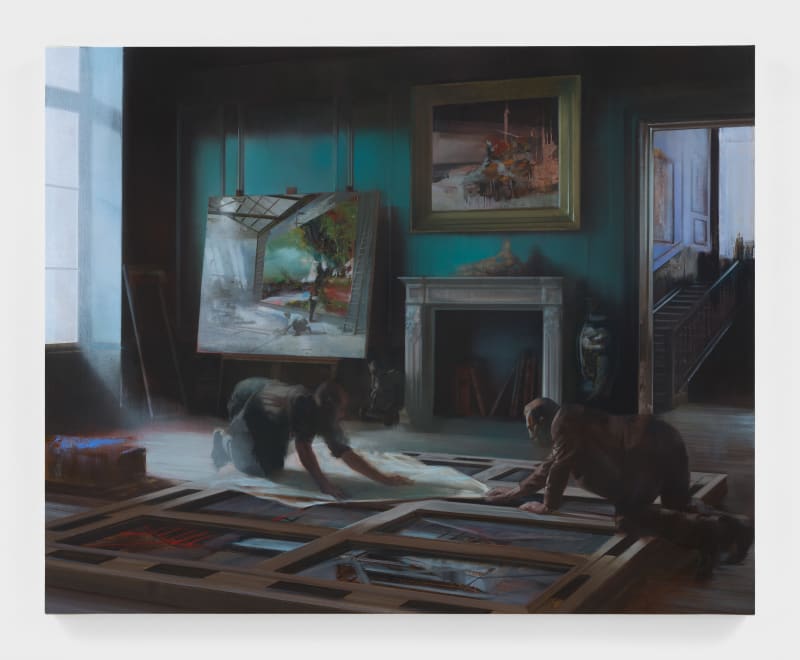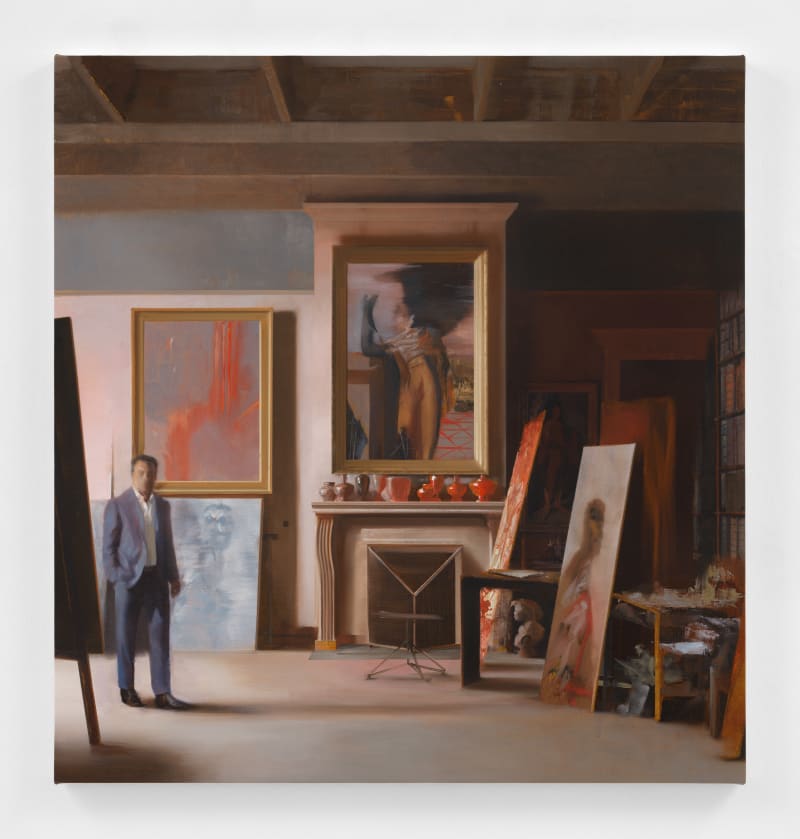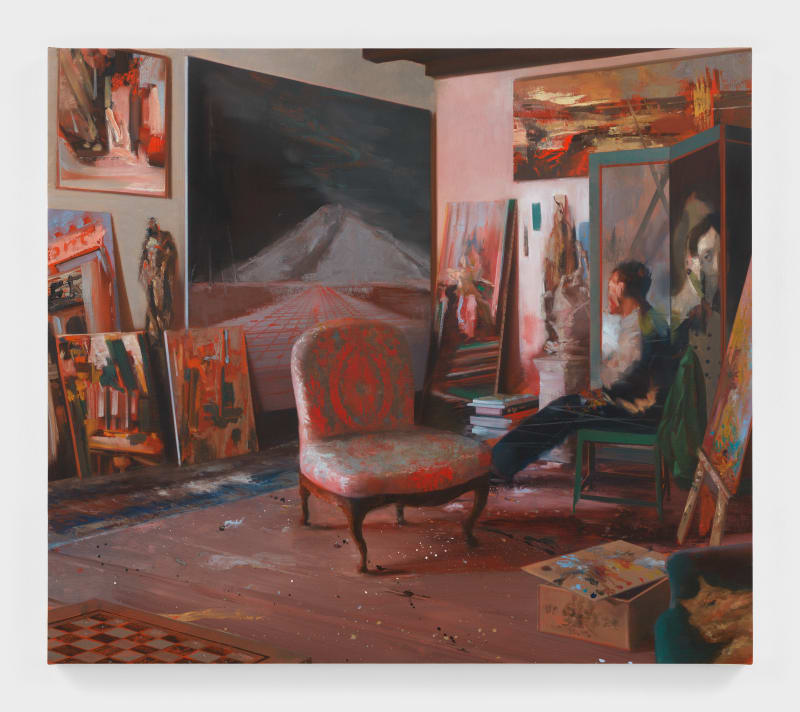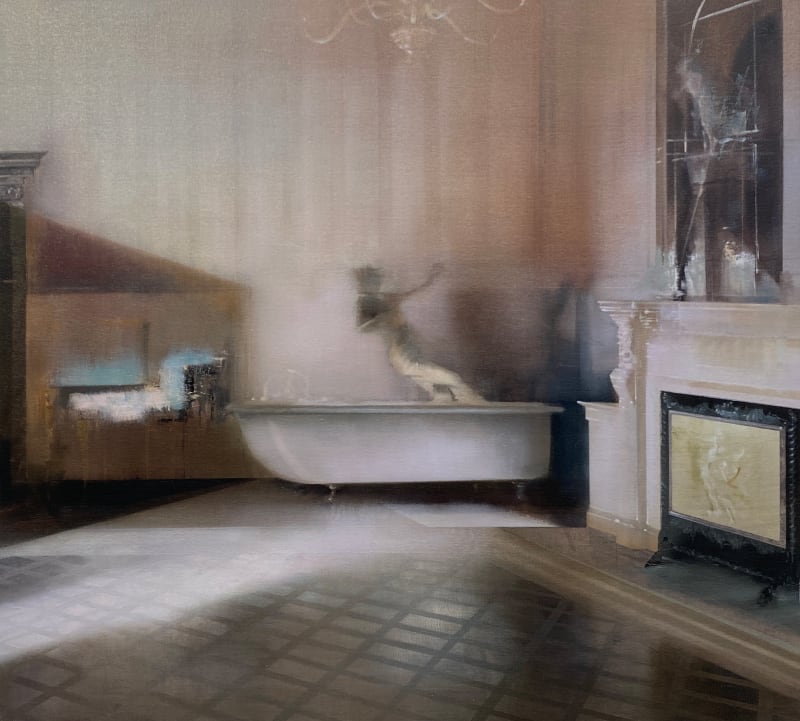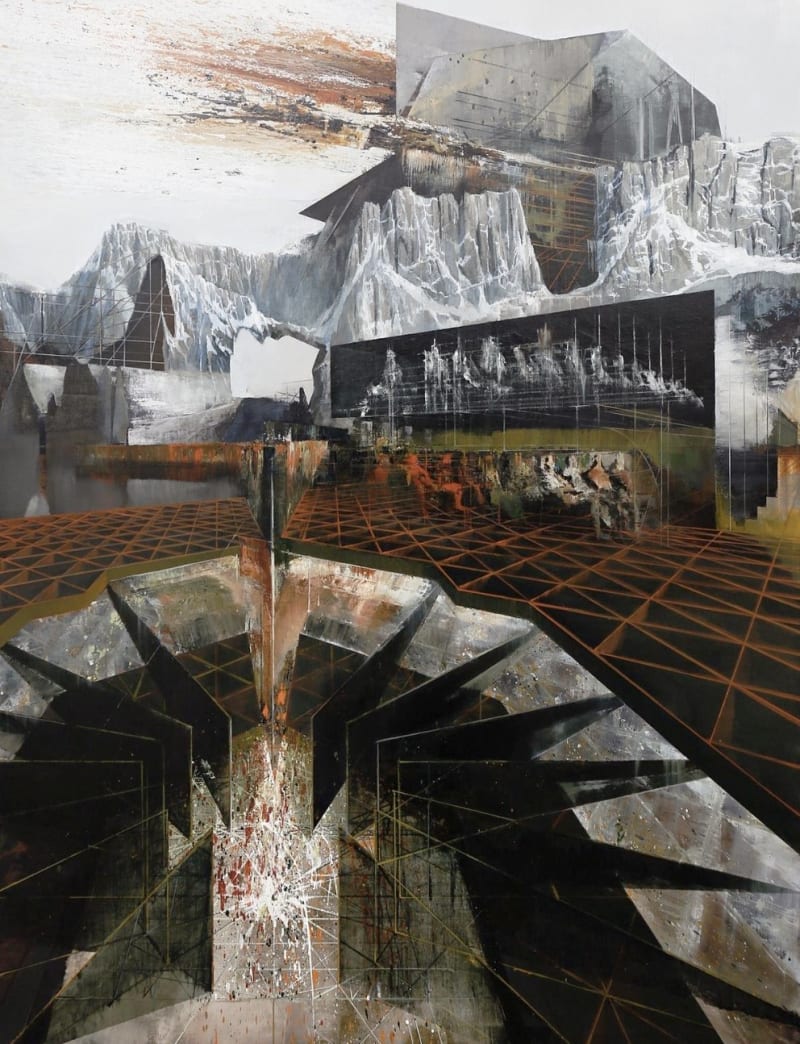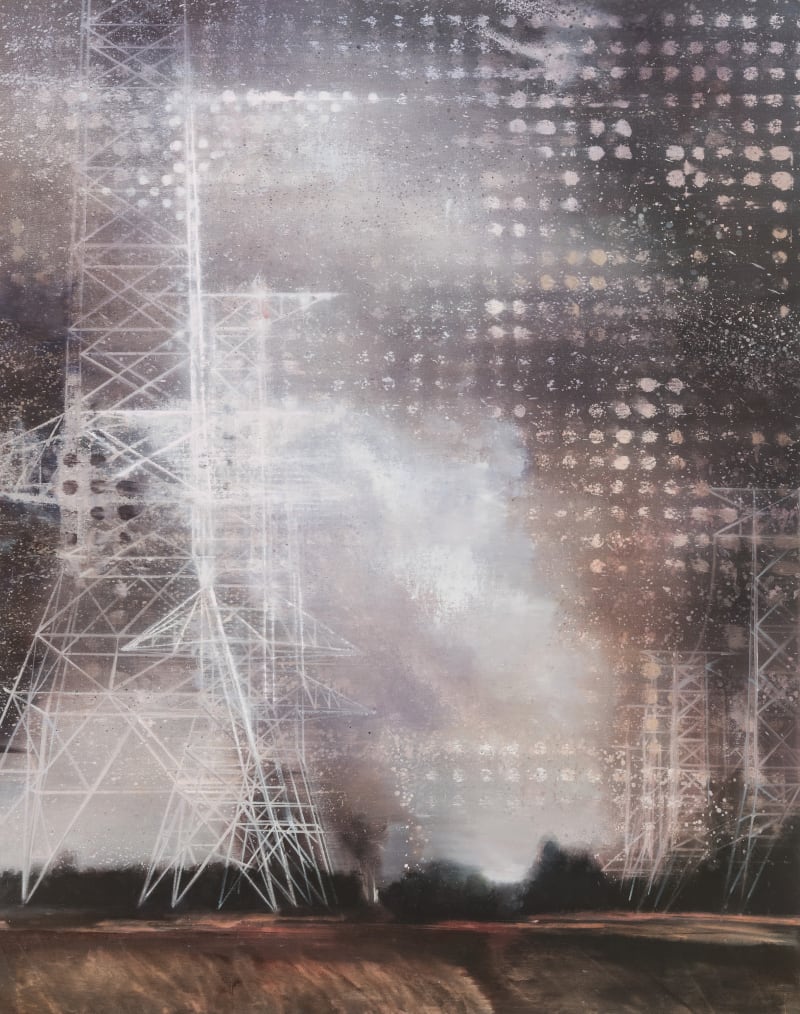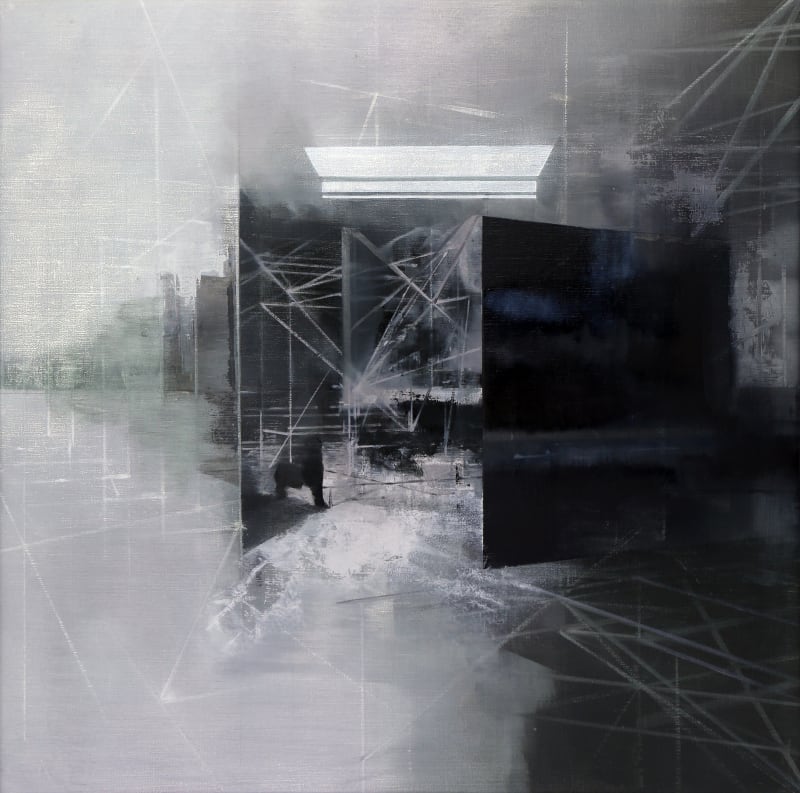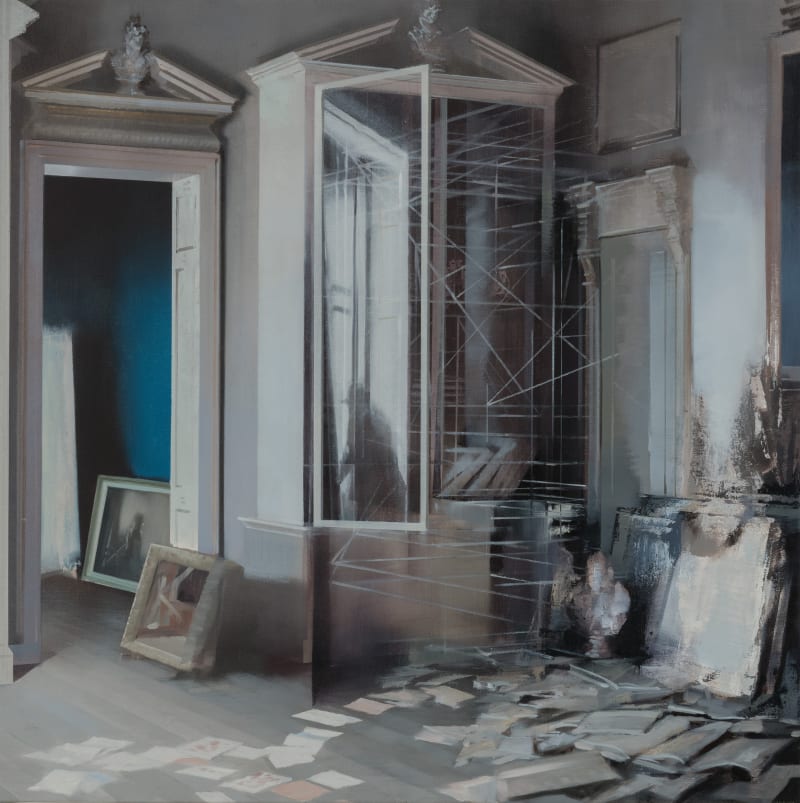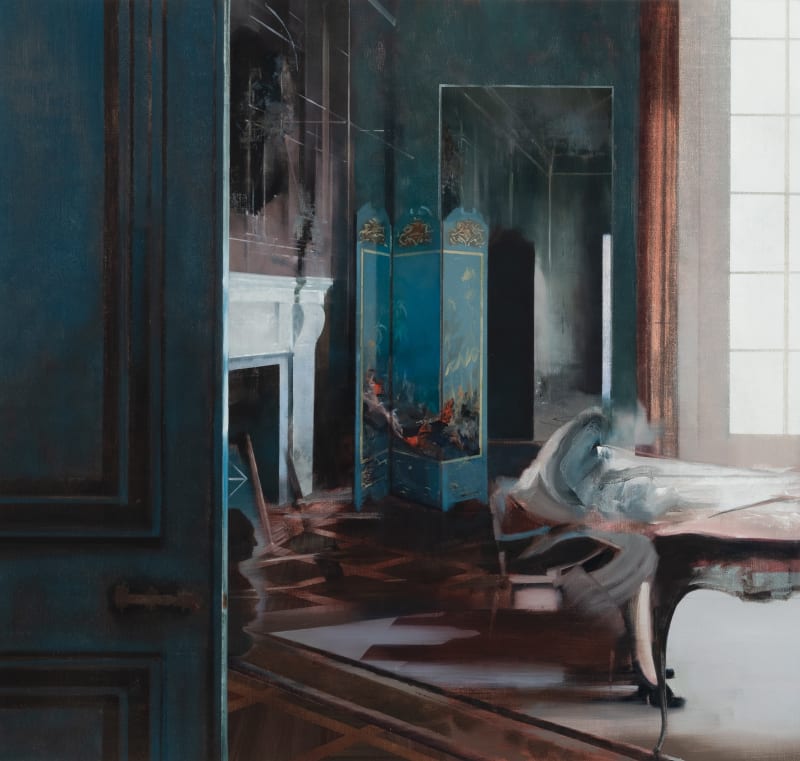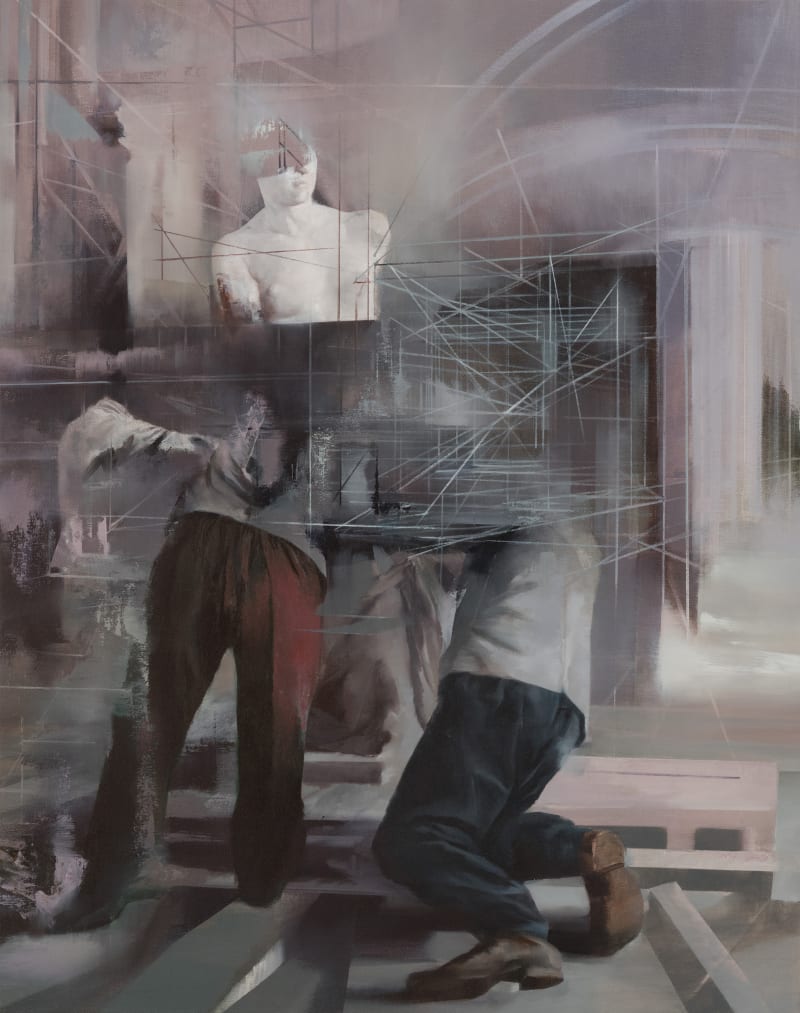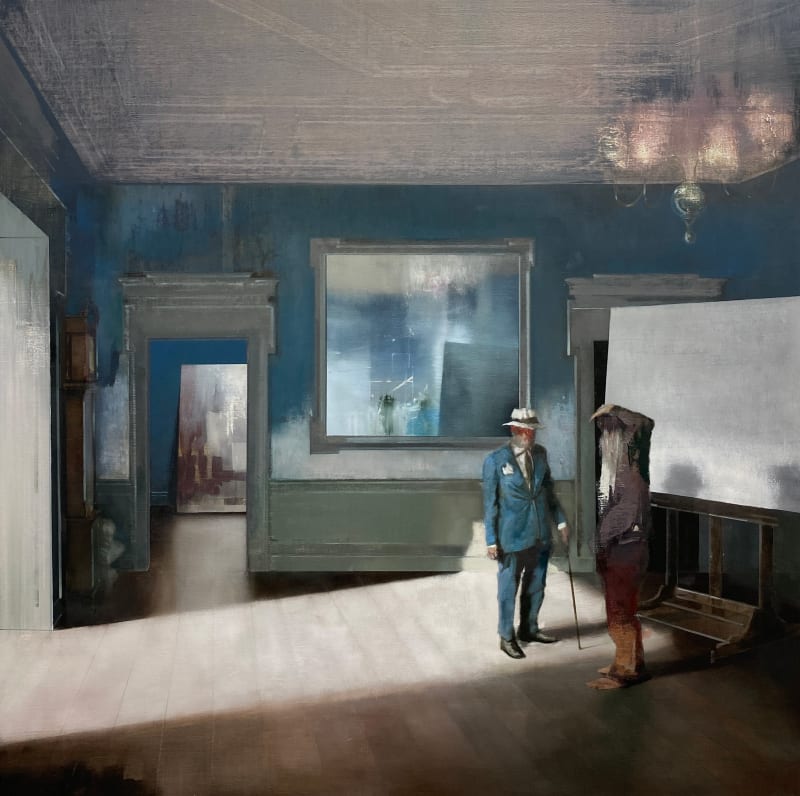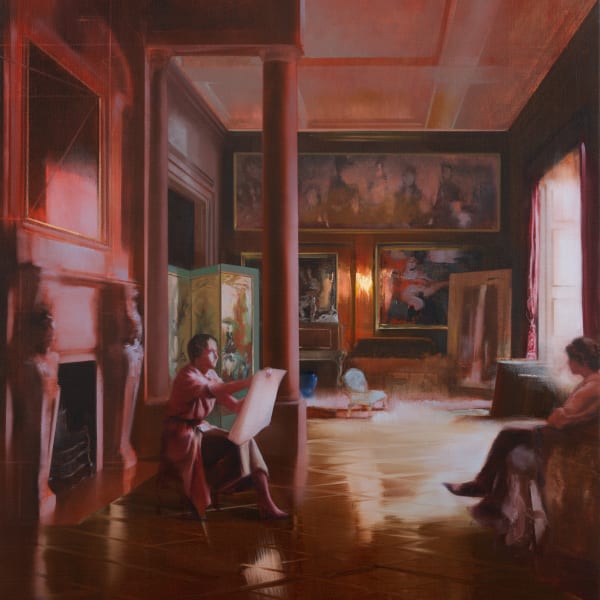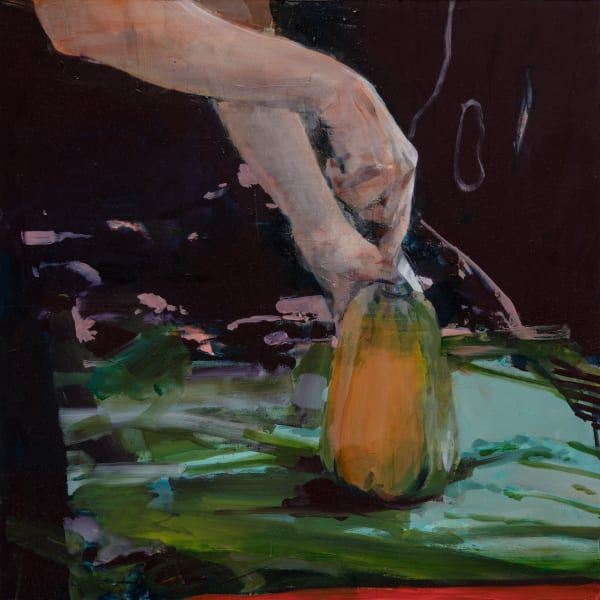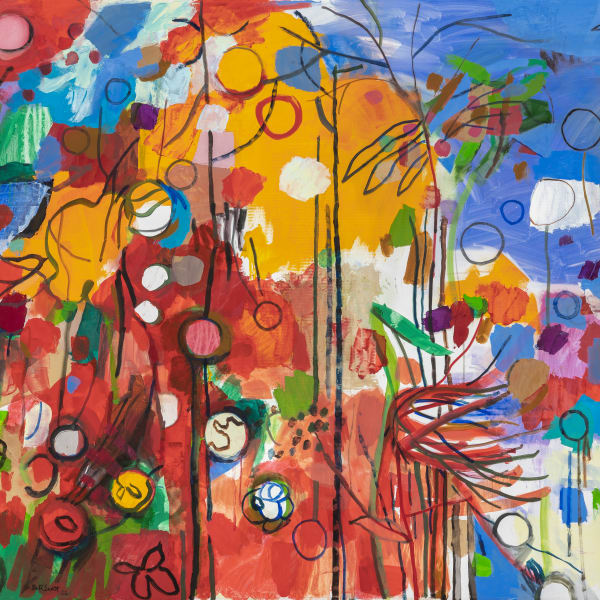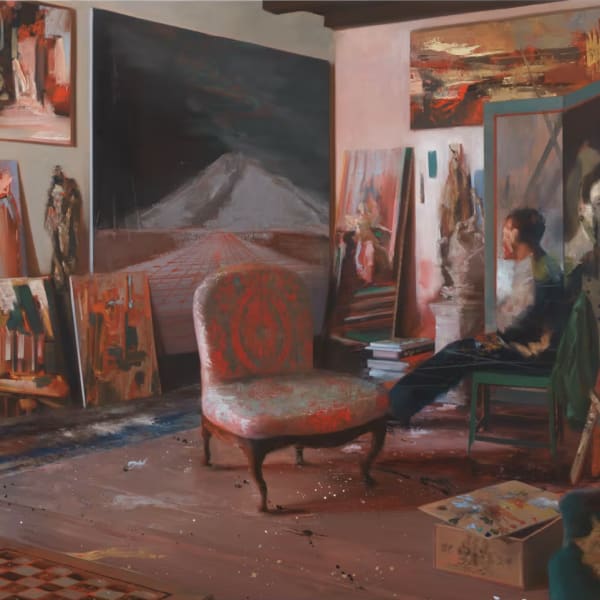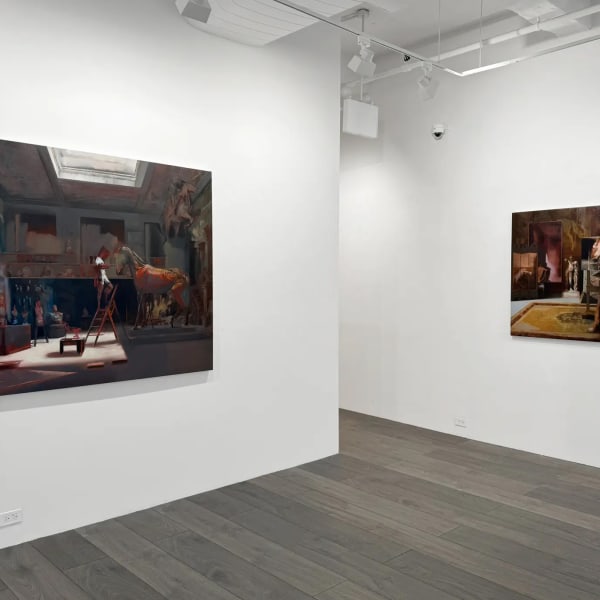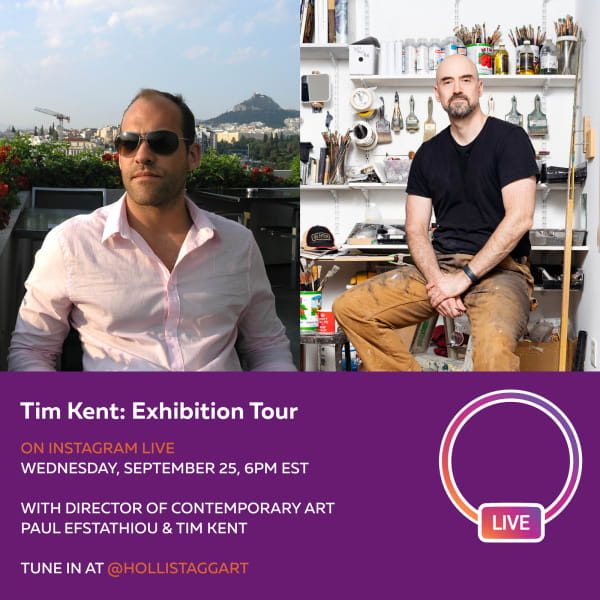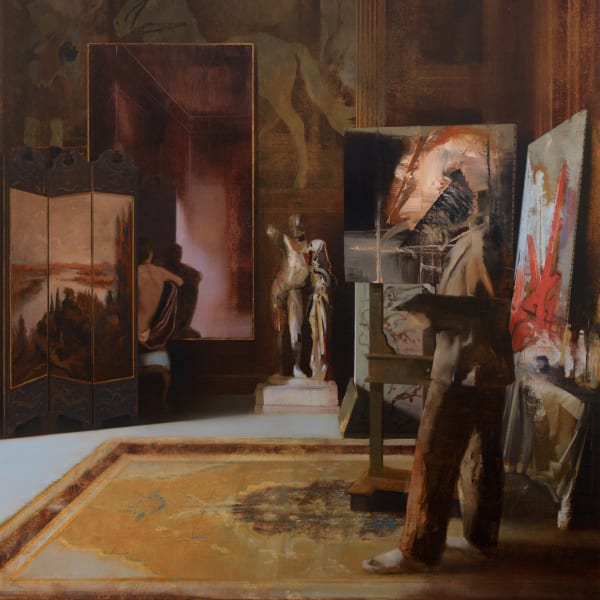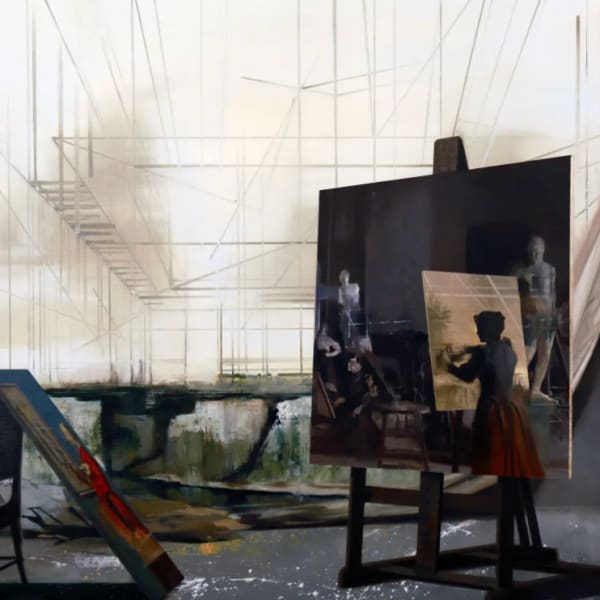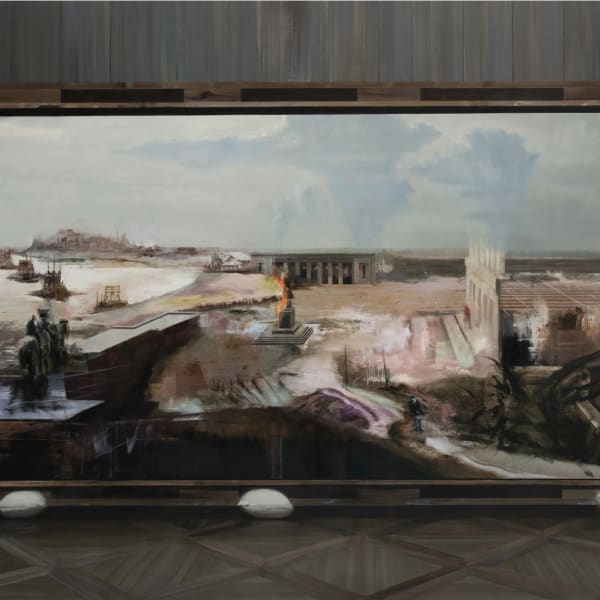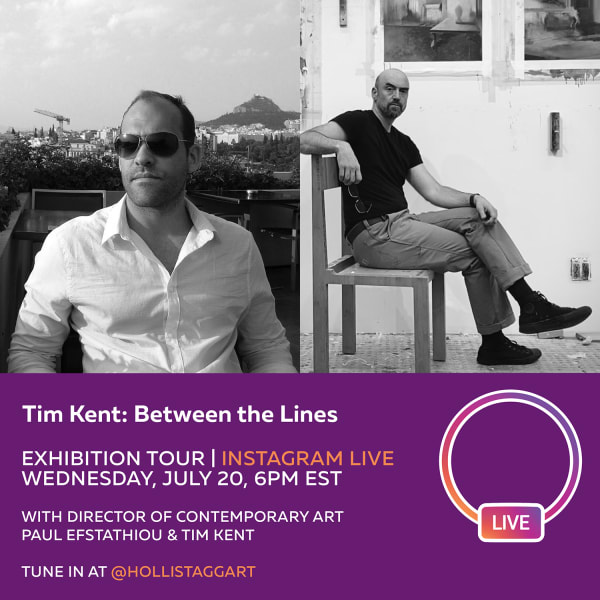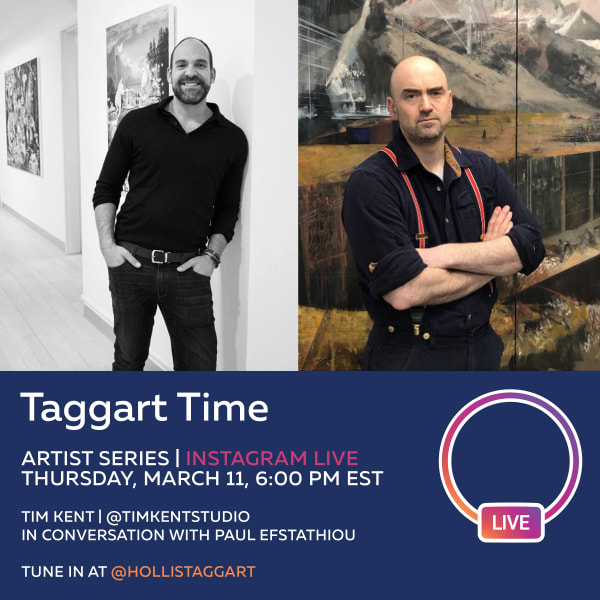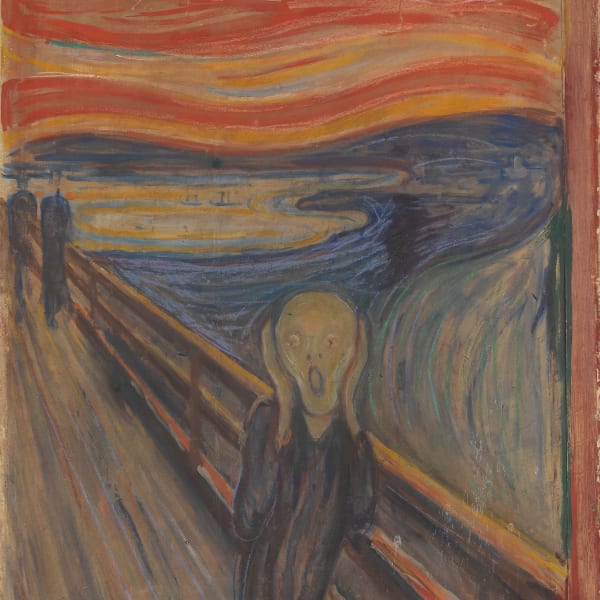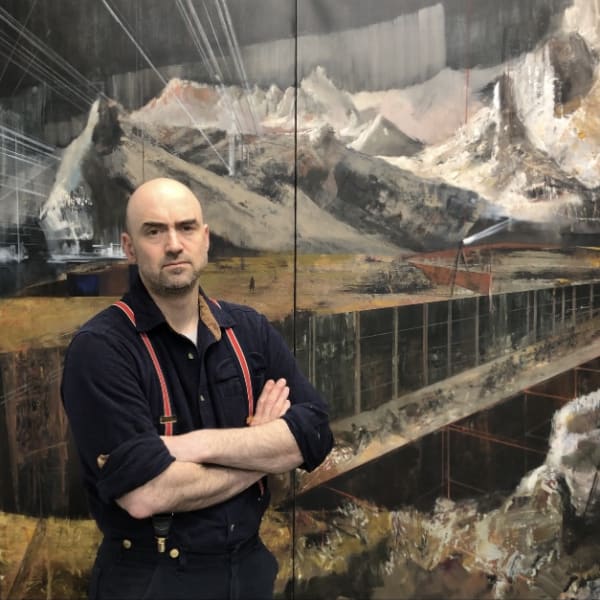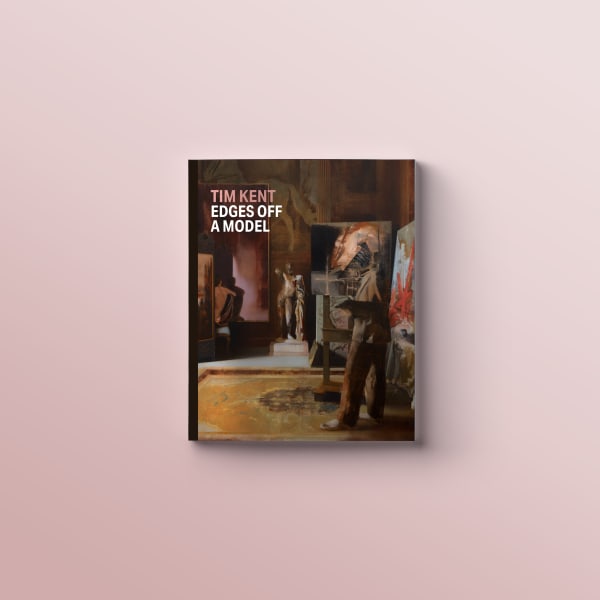
Tim Kent depicts psychologically charged interiors and unsettling dreamlike vistas.
Tim Kent’s paintings often draw from his rich knowledge of and interest in art history--ranging from the vocabulary of Greek sculptures and Baroque interiors to the sensibility of French Rococo and Brutalist architecture--to depict psychologically charged spaces, revisit historical events, and unsettle familiar vistas. Gestural brush strokes and elements of abstraction fuse architecture and landscape, objects and figures, though the picture plane is never flattened. Rather, the viewer negotiates a deep space constructed by Kent’s hallmark use of perspectival techniques. Combining these assorted references with archival and personally amassed photographs of real architectural spaces, Kent has employed architectural rendering software, virtual reality programs, photo processing applications and, more recently, generative AI to sketch out models of the spaces he paints. Alex Estorick in Art Review remarked that: "As a painter who seeks, in his own words, ‘to make sense of the things we can’t see’, Tim Kent is well suited to a world in which many images are invisible to the unassisted human eye."
Tim Kent’s paintings often draw from his rich knowledge of and interest in art history--ranging from the vocabulary of Greek sculptures and Baroque interiors to the sensibility of French Rococo and Brutalist architecture--to depict psychologically charged spaces, revisit historical events, and unsettle familiar vistas. Gestural brush strokes and elements of abstraction fuse architecture and landscape, objects and figures, though the picture plane is never flattened. Rather, the viewer negotiates a deep space constructed by Kent’s hallmark use of perspectival techniques. Combining these assorted references with archival and personally amassed photographs of real architectural spaces, Kent has employed architectural rendering software, virtual reality programs, photo processing applications and, more recently, generative AI to sketch out models of the spaces he paints. Alex Estorick in Art Review remarked that: "As a painter who seeks, in his own words, ‘to make sense of the things we can’t see’, Tim Kent is well suited to a world in which many images are invisible to the unassisted human eye."
Kent was born in Vancouver, Canada in 1975, and received a M.A. from the University of Sussex at West Dean College and B.F.A. from Hunter College. As a first generation American from Turkish and English parentage who emigrated to the United State, his work attempts to express a narrative based around the mechanisms of history and personal memory, as well as the visual structures of power that determine our experience. Trained in perspective painting at West Dean College, University of Sussex, Kent started his career by rendering historical homes throughout England, which sparked his interest in the complex historical and psychological narratives held by architecture and design, art and culture.
Kent has exhibited widely across the United States and abroad, including solo shows at JD Malta Gallery in London; Pilevneli Gallery in Istanbul; Hollis Taggart Galleries in New York; Slag Gallery in New York; and Patrick Mikhail Gallery in Montreal. His work has been covered in many publications, including the book New Surrealism: The Uncanny in Contemporary Painting by Monacelli Press, as well as in ArtReview, The Brooklyn Rail, New Criterion, Huffington Post, Hyperallergic, Fine Art Connoisseur, Lapham’s Quarterly, Le Monde diplomatique, White Hot Magazine, Architectural Digest, and Elle Décor. His work is held in various public and private collections, including the Museum of Contemporary Art in Beijing; 21C Museum in Louisville, Kentucky; and the Rockwell Museum in Corning, New York. Kent lives and works in Brooklyn.











